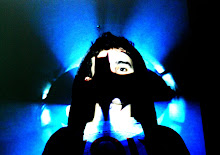



Rationale
The 1991 Bangladesh cyclone was a tragedy. With it, came over 138,000 deaths, and at least 10 million people were left homeless. Deaths were due to; not being aware of the arriving cyclone, slow support efforts unable to reach the area (which would bring foods, water supplies, and medical supplies), Injured unable to receive first aid and infected/disease in body and wounds afterwards. As a response to the immediate event, World Vision responded with Rice Grains, Fresh Water and basic medical supplies and teams.
This leaves the people of Bangladesh injured, stuck, more than likely drowning, and struggling to help injured, or remove the bodies of those who are deceased. This was the Inspiration for my Product, Levar.
Levar is a portable stretcher and flotation device. The Stretcher can be immediately deployed once the cyclone hits, either by local World Vision/Aid workers, or when resources are delivered to the affected area. Once released immediately after cyclone arrival, Levar can be rapidly be dispersed for those in need of a flotation device. In the aftermath of the Cyclone, the Product can then be opened and assembled, and used to collect injured or deceased people.
Levar
- Levar comes from the combination of the Words levitate and stretcher, as I wanted the branding to show the importance and ‘lift’ of this Product.
- The Product is compact, quick to assemble, light, durable, strong, and bright.
- The Product is a yellow shade, to help visibility, not only for workers, but also for its use as a flotation device for those in need.
- The exterior of the product is made from HDPE (High Density Polyethylene), and is made through Rotary Moulding.
- Interior Handle Brackets as well as extending clib brackets are made from Galvanized Steel with a PVC coating.
- The Fabric used is RipStop fabric, due to its high durability, waterproof nature and strength.
- All materials are low cost, so the products can be made available to not only the workers of the World Vision and other Aid organisations, but also for the residents of Bangladesh.
Reflection
I am very grateful for this project. Not only did it make me appreciate the social, helpful and humanitarian views of Design, but also made me, as a 3rd Year Industrial Design Student, appreciate the whole international Industrial Design community. It is with these products that we save people and lives, and create a better world.
The product has turned out very close to what I expected, but certain boards could have been presented with the presentation, including HOW the actual product disassembles then reassembles, and the scenario storyboard should have been more up to standard.
The design of Levar is Universal, and easily used by anyone worldwide. The form is simple, stackable/transportable, and basic ergonomic principles have been shown in the model, with the width of the entire object, the width of the handle grip and dimensioning ergonomics and the statures of the average Bangladeshi person, all being considered when designing this product.
I was very happy with the model as i have never done something of that scale and level in blue foam before. My only issue with the model was the finish. The spray Paint and Poly Filla reacted with the blue foam, which burnt away certain parts of the model and cracked slight sections on the top. I was happy with the colour, it turned out exactly how I wanted it to be. In future wi wont be making appearance models out of blue foam, without proper layers and epoxy use for the finish. i should have gone with layered MDF like I originally wanted to, but was persuaded to the use of blue foam.
The Material choice was appropriate, given all the weather conditions the product will have to withstand. HDPE is very durable and strong, and can withstand great impact. Galvanised steel is very strong, and with a PVC coating, is resistant to weather ability. The Fabric used is just right for the product, as it is highly durable and strong.
I wish I would have followed some of the ideas I had originally put forward, some of my concepts that were shut down by my tutor, involving the method of how the mechanism and product would work. The original idea was to have a collapsible all in one bed section, that folded out, and folded straight back in, almost like a Constantia fold, or a method similar to that of the metal fencing that we see so commonly around, which u can extend as far as you wish. The Handle ergonomics were originally meant to be alot more organic, but yet again, I was told to pursue another direction.
I was very happy with my concept and presentation apart from being ridiculed for ideas I should have done, when I originally did design them, and suggest them. I have enjoyed this projects outcomes, and area.
The world needs alot more help from designers.


A useful product for deployment in disaster affected areas.
ReplyDeleteMore explanation of the product in use including pictures and possibly a model displaying this would have definitely been more helpful but given the described circumstances and the difficulties with ideas generation, what you have achieved is a nice piece of work.
This was a good concept that would provide a much needed compact solution to stretchers during a disaster. The product would have come across better if it had a more detailed information about how the mechanism was pulled apart and how it worked. In saying that the concept is sound and a useful for the environment that it is intended for
ReplyDelete